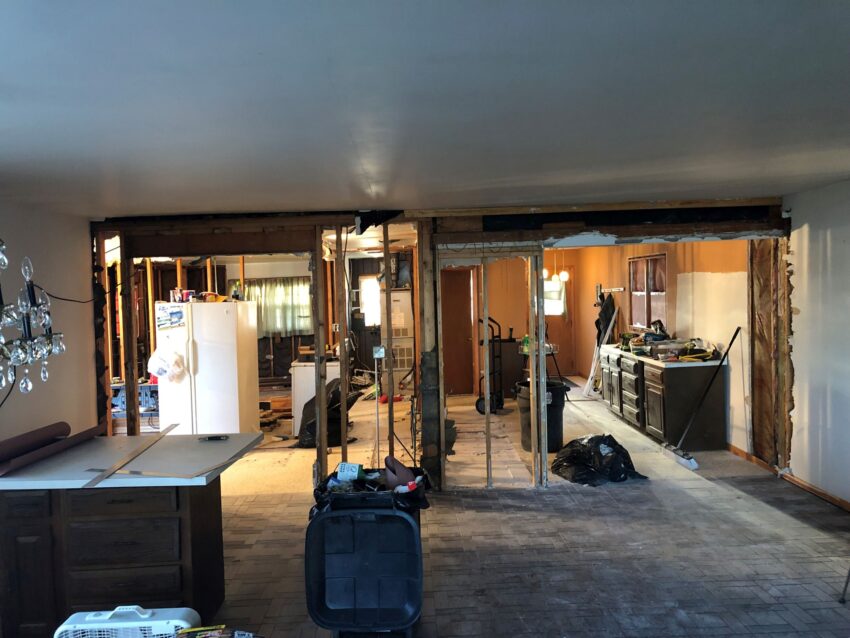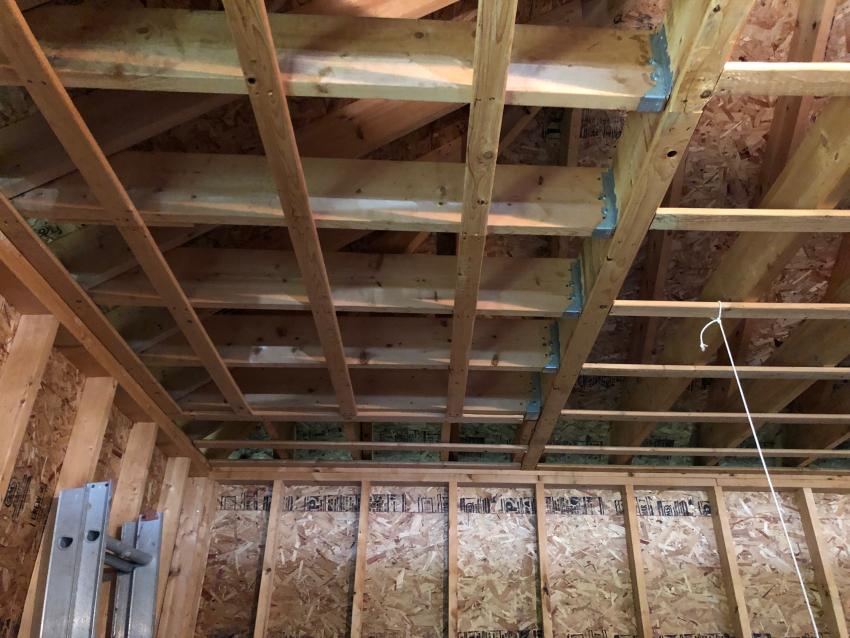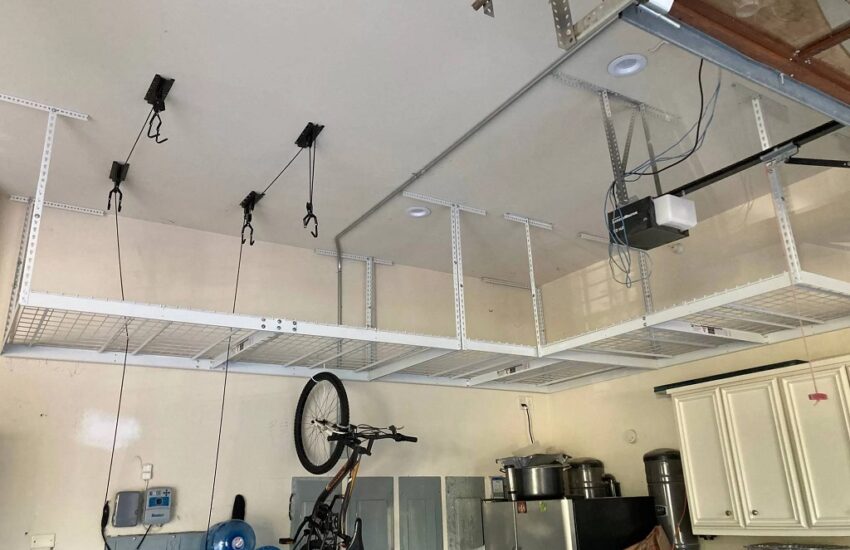When it comes to garage beams, the size of the beam determines how much weight it can support. You need a beam that is large enough to support your weight and the weights of your cars. But what determines the right beam span for the garage? That’s where we come in. We’ll tell you everything you need to know about beam spans and load calculations before making a choice.
What is the Right Beam Span for Your Garage?

To safely span a 32-foot-wide garage, you need a beam with a minimum 3-foot diameter. If your garage is 20 feet wide, you’ll need at least a 6-foot beam. But that’s not enough for structural integrity. You’ll also need joists to support drywall and fiberglass rolls as well as braces for the floor and ceiling.
If the beam spans 33 feet, you’ll need a beam of at least 8-foot diameter. Span tables for I-beams can help you determine the necessary size of beam required to span 33 feet in a garage. If you need help calculating the beam span for your garage, consult with a structural engineer.
Benefits of Installing the Correct Beam Span
Installing a beam span for garage construction is an important part of the project. This ensures that the beam is strong, durable, and capable of handling the load of the garage door without failure.
A beam span refers to the width of a garage door opening or tracks across a garage door. A wrong beam span can lead to problems with garage growth, such as roof failure and sagging. Additionally, choosing the wrong material for a beam can also result in poor durability and strength.
Instead of relying on general assumptions about how beams should be constructed, it’s vital for homeowners to seek expert assistance when making decisions about their garage’s specifications. Precast concrete and post-tensioning are two common structural systems for long-span garages; both offer excellent stability and protection against roof failure.
What Size Beam Do You Need?
The most common structural systems for long-span garages are precast concrete (double tees) and post-tensioned concrete, with typical column bay spacings of 36, 45, and 48 feet. For a span of 33 feet, the beam size required is usually an I-beam and the roof should be 4/12 asphalt with 3/4 sheeting.
You can calculate the span length using the following equation:
Span length = [L + 2L] / 6
where ‘L’ is the length of the span in feet and ‘L’ is the height of the beam in feet.
When considering a garage, it is important to consider factors like load capacity and safety. The beam size of a garage can determine its load-bearing capacity. A beam size of 12 inches provides the sufficient load-bearing capability for most residential garages. This beam size provides adequate structural strength and stiffness for residential garages. Additionally, beams larger than 12 inches have increased structural safety due to increased crash safety margins.
Calculating Loads for Maximum Support
Loads on beams in residential construction are determined by dead and live loads. For example, floor joists are typically sized and spaced according to the load they’re expected to support. In residential construction, W14x26 beams are most commonly used for this purpose. They’re designed to withstand loads from wind, earthquakes, hurricanes, and other similar events.
If you’re designing beam spans for a particular application, it’s vital to consider the point loads at the center of each beam. This will help ensure that the beam is able to support the total load it’s designed for without collapsing or breaking apart. Design software such as IronCAD can be used to create custom beam designs and specifications, which can be useful for crafting durable structures and structures that are functional and aesthetically pleasing.
Get Professional Advice on Beam Span
A beam spanning 5.5m and 30cm wide is currently in use [101]. Professional advice on garage beam span is available and can help you determine the size of the beam needed to span the garage ceiling. Following a professional’s advice on beam span can help ensure that you get the right size and shape for your garage. Additionally, it’s vital to size the joists carefully so that they’re strong enough to support the weight of the beam. The necessary size of the joist will depend on factors such as the width of the beam and the garage’s height and width. Professionals suggest using two 2x10s four wide with 12′ 2x10s extending from them [102] to provide adequate stability and support. Additionally, they recommend using a beam of 16mm or 24mm thick for strength and durability [103]. A forum leader can answer any questions or provide guidance regarding the proper usage of beams for garages and storage.
Choosing the Right Material for Your Beam
To get the most support from your beam, you’ll need to choose a beam material that is strong and durable. The most common materials used for joists are steel, lumber, and concrete. When selecting a beam material, it is important to consider the building code requirements and the species, size, and spacing of the lumber.
As a general guideline for steel joists, the minimum yield strength should be 60kN per millimeter (PSI), and the maximum allowable span length should be 16 feet. Steel joists are most suitable for applications where high loads or heavy winds are not likely to occur. Another popular beam material is lumber joists. The minimum yield strength of lumber joists should be 40kN per millimeter (PSI), and they can have a span length of up to 10 feet. Concrete joists are suitable for applications where high loads or heavy winds are unlikely to occur. For these applications, they must have minimum yield strengths of 28kN per millimeter (PSI) and a span length of no more than 3 feet.
When selecting a beam material, it’s important to consider building codes and the species, size, and spacing of lumber used in your project. For example, if you are using joist lumber with an exterior diameter (OD) of 8 inches or less, select Grade-A lumber with a minimum qualifying bend stiffness property value of 7 ksi and an overall grade ranking of 3A or higher for bending tolerance. Additionally, when using beams that span greater than 16 feet long or 4 feet wide, you will want to use beams with a nominal compressive strength of at least 60kN per square inch (psi).
Conclusion
Additionally, it’s vital to select a beam span that can support the maximum load without pushing it off the span. However, in most cases, this requires professional guidance and an accurate calculation based on your garage size, load, and span type. Comment below if we have missed any aspect of the beam span setting or if you feel we should have explained it better!








